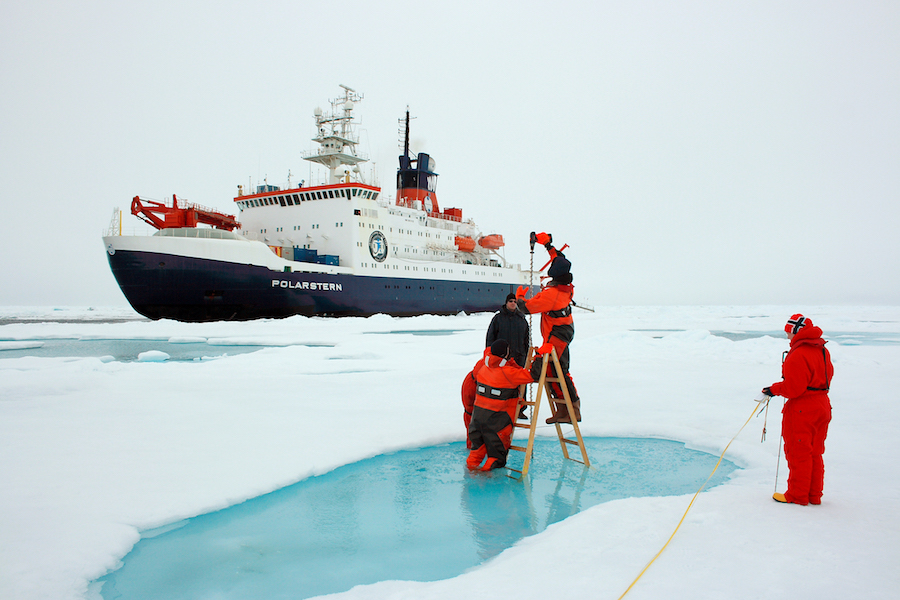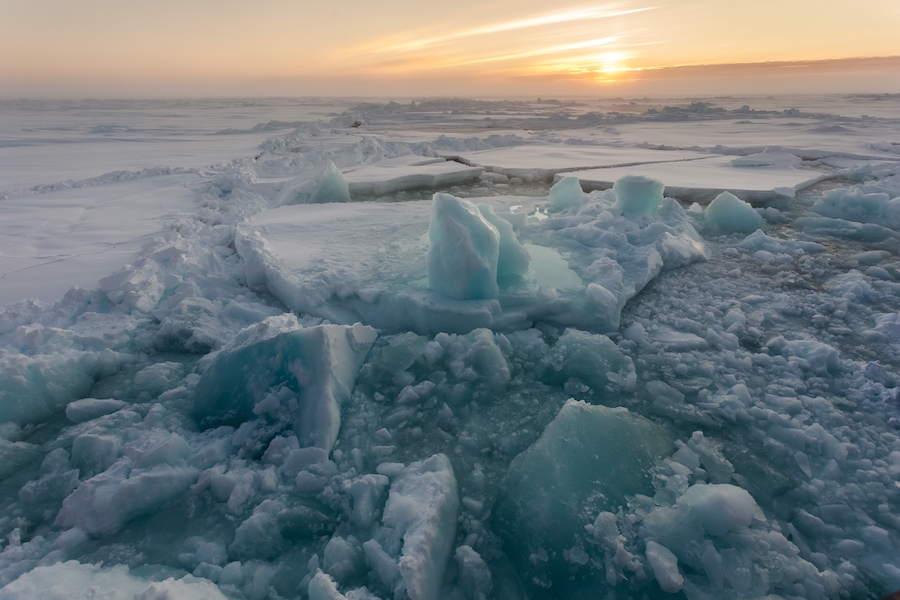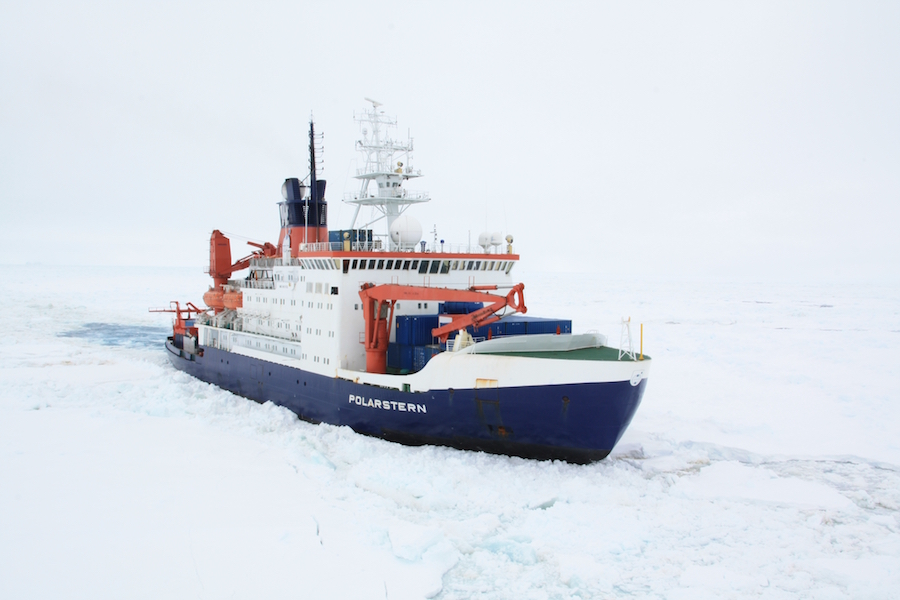History of Arctic research
1868 polar explorer Carl Koldewey, heading Germany's first Arctic expedition, set off on the GRÖNLAND sailing vessel for the east coast of Greenland. However, he never arrived at his destination – sailing instead to Spitsbergen.

His original goal was to advance northwards as far as possible along Greenland’s east coast or to travel around Spitsbergen to reach “Gillis Land”. The ice along the way prevented his achieving either of these goals. He sailed instead to Spitsbergen, reaching the northmost latitude of 81°5'. This pioneering expedition placed Koldewey – after whom the first permanent German research station in Spitsbergen is named – in the ranks of international research expeditions starting in the mid-19th century.
These expeditions enabled polar researchers to collect new data on meteorological and geomagnetic conditions in the Arctic. In addition to other European countries such as England and Austria-Hungary, the USA also undertook Arctic expeditions.
Gains in knowledge about the polar regions
The geographer August Petermann, who initiated the first German expedition to the Arctic in 1868, had hoped to confirm his theory that the Arctic Ocean was completely ice-free and therefore navigable. Although the explorers’ did not reach their original destination – the east coast of Greenland – they collected data on current velocity, temperatures and elevations in the deep sea, and magnetism which were explored further during the second German expedition to the Arctic in the following year. In 1869, Petermann and his crew successfully reached the east coast of Greenland where they then spent the winter.

These two Arctic expeditions sparked many further expeditions from Germany to the polar regions, including Antarctica. Each journey delivered new knowledge about ice cover in the Arctic, local ecosystems, Arctic flora and fauna, mineral deposits, and the relevance of the Arctic to our climate – something which also ensured that the expeditions became safer.
Who reached the North Pole first?
In 1906, Roald Amundsen of Norway finally succeeded in traversing the Northwest Passage aboard the vessel GJØA. During this expedition he gathered information about the Earth’s magnetism, the survival strategies of indigenous peoples, and he studied their language, culture and hunting traditions. He also determined the exact location of the North Magnetic Pole.
The early 20th century saw the beginnings of the race to reach the North Pole. The Americans Frederick Cook and Robert Peary were each convinced they had been first to reach the northernmost point in the Arctic (Cook on 21 April 1908, Peary on 6 April 1909). However, there were some discrepancies in their accounts, and doubts about their truth linger until today. For example, the two Inuit men on Cook’s expedition delivered two rather different reports of the journey. Also, Peary’s travel log contained data that raised some doubts about the distances his crew was travelling per day: initially around 20 km per day, then going up to 250 km covered in four days. Other explorers at the time did not believe these figures to be likely. It is an undisputed fact that the British explorer Walter William Herbert reached the North Pole via land route, in 1969 – that is to say, 60 years later on.
Progress thanks to research vessels

Whereas explorers often used dog sleds on expeditions until the end of the 20th century, it is now more common to deploy large research vessels and ice breakers. These ships allow quicker passage through the regions of the Arctic and can collect data about the climate, ice cover and living organisms. Since 1982 German polar research institutes have deployed Germany’s largest research vessel, the POLARSTERN, both for expeditions and to bring supplies to research stations in the Arctic and Antarctica.
The Alfred Wegener Institute‘s (AWI) research vessel has now made more than 100 journeys into the ice. The vessel is underway on these expeditions for an average 320 days of the year.